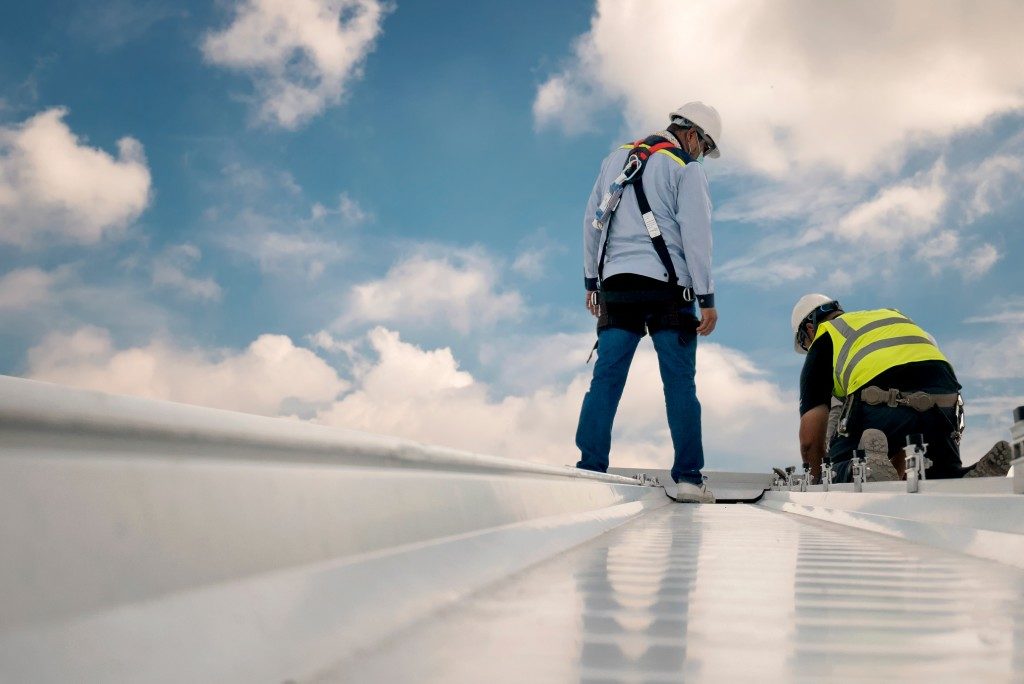There are several material alternatives for single ply roofing. These are roofs designed for installation in one layer. They have better UV resistance and flexibility compared to other roofing products. There are two primary types of single ply roofing membranes: thermoplastics and thermosets. Thermoset roofing membranes are made from synthetic rubber polymers, such as neoprene, CSPE, and EPDM. They are used on large roofs since they have minimal seams. Thermoplastic roofing membranes are made of TPO or PVC. These are the primary choice of corrugated plastic roofing sheets for many UK properties. Thermoplastic membranes often include a reinforcement layer made of fiberglass or polyester for additional stability and strength.
Single ply roofing can be mechanically attached or adhered to a substrate. Fully adhered roofing has a smooth surface that will allow the use of colored membranes for a more aesthetic look. Here are your adhesive alternatives for roof installation:
Single Part Polyurethane Adhesives
These are high-performance adhesives that you can modify to foam at varying levels based on your application needs. Single part polyurethane adhesives are applied using spray systems, rollers, or brushes, or they can be poured directly onto your roof from the can. The adhesives will be cured by the moisture in your environment and are only used in temperatures above five degrees Celsius. They are the best option for flat roofs since they remain durable and strong after application even in high temperatures.
Two-Part Polyurethane Adhesives
These are often labeled 2C PUR. They have all the properties of single part polyurethane adhesives but will cure faster compared to the latter. Two-part polyurethane adhesives are also not affected by heat or moisture when curing. They are ideal for generating a tough yet flexible bond between your membrane and roofing substrate that will withstand contraction and expansion stresses.
Solvent-Based Contact Adhesives
These are synthetic rubber adhesives applied in two coats using a sprayer, roller, or brush. One layer will be applied to the roofing membrane’s back while the other one is applied to the substrate. The two layers will then be pressed together to form one layer. Solvent-based contact adhesives generate an instant bond that is perfect for vertical roofs.
If the roofing membrane and substrate are too dry or wet, you will not have optimal adhesion. Very dry surfaces will make it impossible for the adhesive to generate a bond while very wet ones make the adhesive blister.
Water-Based Adhesive

These acrylic adhesives are applied using rollers or brushes onto your substrate. Water-based adhesives are often not used for onsite installation of roofing membranes. This is because they will get too dry in temperatures below ten degrees Celsius and, therefore, not adhere to your roofing membrane. They are used in factories where the temperatures can be controlled. Water-based acrylic adhesives will suffice for offsite constructions.
Regardless of your adhesive of choice, the surfaces should be dust and debris-free and dry to guarantee an optimal bond. You should also ensure that the environmental temperatures during your construction match those recommended by the manufacturer for your adhesive. To guarantee this, it is best to buy the adhesives and the roofing membranes from the same supplier.

